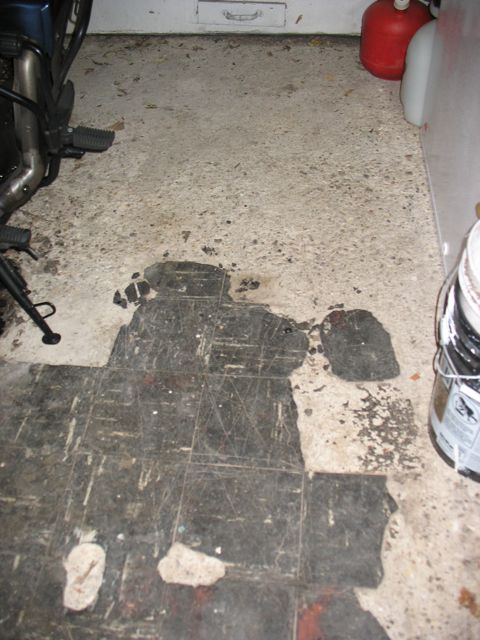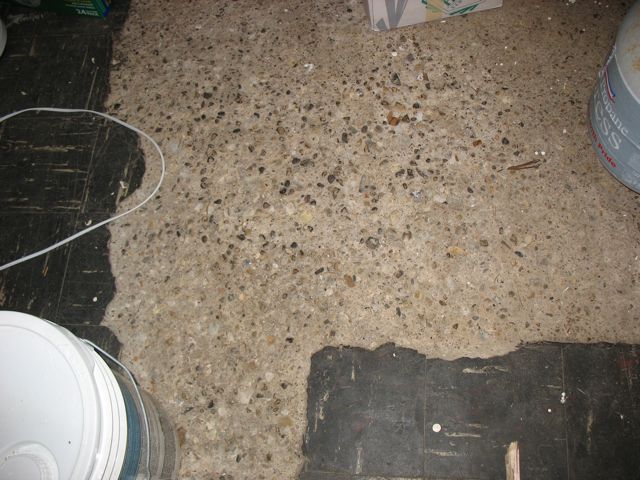No, spalling occurs when water gets into concrete and it subsequently freezes. The pressure of the expanding water/ice inside the concrete causes the concrete to break where it's least able to oppose any breaking, and that occurs as "chips" of concrete break off at the surface of the concrete. This typically happens on the surface of a concrete foundation where water has been absorbed into the concrete and subsequently freezes.
What you have there is deterioration of weak concrete at the surface. That deterioration occurs when concrete is weak only at the top surface, usually because of a heavy rain falling on the concrete before it was cured enough to be resistant to moisture. Normally, the resulting concrete is weak only an inch or two deep at the most, and is of normal strength deeper than that. But, I guess it would depend entirely on how wet the concrete was when it got rained on, and how badly it rained. It's the "watering down" of the concrete by the rain that causes it to be weaker than it should be, and that's why the weaker surface concrete is easily worn off to expose the aggregate (stones) just below the surface. If there are only areas on your garage pad that are deteriorated, then it could be that the rain drained into those areas, or that the rain fell just as the concrete was curing to the point where it was resistant to moisture so that some areas were more affected than others.
(I'm not 100 percent sure about the concrete below the weakened layer being as strong as normal, so maybe confirm that with any concrete contractor listed in your yellow pages.)
Fresh concrete will not bond to cured concrete. If you want to level this floor, you need to use an epoxy or latex CONCRETE BONDING AGENT to literally glue the fresh new concrete you put on top to the old concrete.
I've never used an epoxy concrete bonding agent, but I know that you can get epoxies that can be applied underwater to effect a repair. I presume that you simply paint the epoxy concrete bonding agent onto the rough concrete, and pour the new concrete onto it.
Basically, the difference between a latex concrete bonding agent and white wood glue is that white wood glue will re-emulsify if it gets wet and stays wet for a while, even if it's been dry for decades. A concrete bonding agent has a window of time after it first dries that it will re-emulsify back into glue. After that window of opportunity has passed, a chemical reaction occurs within the latex bonding agent that renders it unaffected by moisture. So, the procedure would be to paint the latex concrete bonding agent on the deteriorated concrete and allow it to dry to the touch. Then pour the new concrete onto the concrete bonding agent and finish the concrete so that it's smooth. The moisture from the fresh concrete will re-activate the latex concrete bonding agent so that the bonding agent adheres to both the old and new concrete surfaces. Then, just allow the concrete to cure, and the old and new concrete will be bonded together when it does.
If you intend to do this work yourself, then you will notice that the bagged concrete mixes in your hardware store will give thickness ranges that you can use them for. For example, the bag might say: "Can be used to a 1/2 inch thickness." or "Can be used to a 0 inch thickness." The thickness the concrete mix can be used for has nothing to do with the concrete itself, but is determined by the size of the largest stones inside the bag. So, if they used stones in the concrete mix are no larger than 1/2 inch in diameter, then the concrete mix can't be spread any thinner than 1/2 inch thick. Concrete mixes that can be feather edged down to (effectively) 0 inches in thickness won't contain any stones, but will just have fine sand in them as the aggregate.
Typically, what you'll find under asphalt tiles is "black out" or black asphaltic adhesive. Some people mistake that for "tar" or "asphalt". There are solvents you can buy to remove this black out, but if you're planning to resurface much of the garage floor anyhow, I'd suggest that you go to any place that sells flooring installation supplies and ask about renting an electric floor stripper. Phone any place that sells flooring (like carpet), ask to talk to the Installations Manager and ask him who sells flooring installation supplies in your area. That place will also normally both rent and sell electric floor strippers. I expect you might also be able to rent them from most tool rental places as well. Maybe get some spare blades for it, too.
http://www.craintools.com/fs-more_pages/fs-700.html
PS: Never try to use an electric floor stripper on a wood floor because it'll chew up the wood somethin awful. These tools are really only meant to be used on concrete floors.









